
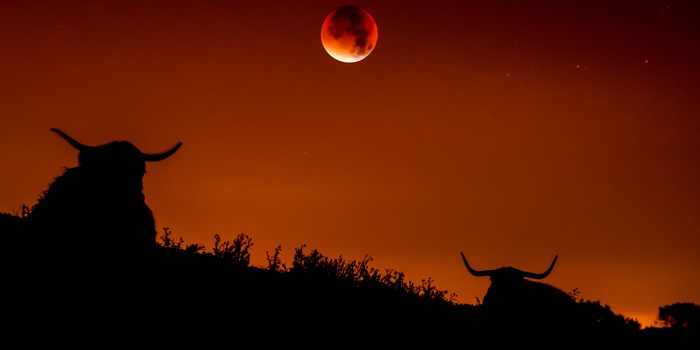
On the occasion of the lunar eclipse: How to photograph the moon
The longest total lunar eclipse of the century will take place on Friday, 27 July, and the weather forecasts are good. If you want to capture it photographically, there are a few things you need to know in advance.
The lunar eclipse on 27 July is the perfect occasion to photograph the moon. The sky is expected to be clear, the eclipse will last a long time and it's the weekend. Mars is also expected to be right next to it and will be brighter than ever. And the most important thing: during a lunar eclipse, the moon remains clearly visible. Indirectly, it is still illuminated and takes on a reddish colour. Beautiful. Oh yeah.
Let's go right at moonrise shortly before 9 pm. If the moon has to climb over houses and hills first, it will of course only be visible later. The spectacle lasts several hours. However, you can of course also photograph the moon on any other day. The following tips will help you in both cases.
Moon alone: as much focal length as possible
To get a large image of the moon, you need a powerful telephoto lens. I mean a really powerful one. The usual 300 millimetres is not enough, and you can forget about smartphones anyway. The best way to do it is with a superzoom camera. Some of them can achieve a magnification equivalent to more than 1000 mm focal length in 35 mm format. In this particular case, this is actually useful. With lenses for SLRs and mirrorless system cameras, you can extend the existing focal length with a teleconverter.

Superzoom cameras with more than 1000 mm KB focal length
Teleconverter
I shot the image below with an APS-C camera and a focal length of 300 mm. The magnification corresponds to the 35 mm focal length of 450 mm. As you can see, the moon is still quite small and I wasn't able to tease out too much detail from this image.
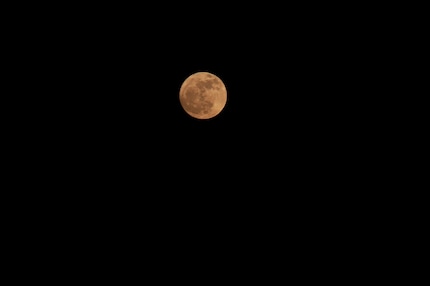
Here's an example with a superzoom camera capable of 1000 mm. You can already see a lot. The shot was taken at 100 ISO and 1/250 second.
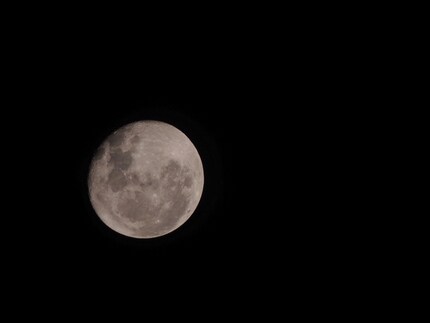
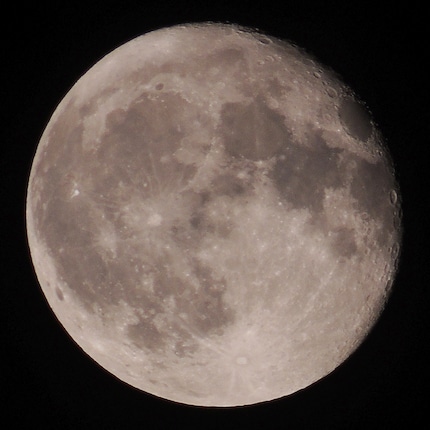
Tips for taking the photo: The moon moves slowly, but if you zoom in this close, the movement of the sky can already lead to blurring. (Hello know-it-all: Yes, I know that the earth is actually rotating and not the moon, or rather the moon is, but so slowly that it really doesn't matter. And now please get back to the topic, thank you :) So expose as briefly as possible. You'll probably have to expose completely manually anyway, because automatic exposure tends to be too long. The exposure times are so short that you don't necessarily need a tripod.
Moon as part of an image
Don't want to buy something extra for this one moment or don't have enough time? Then try to make the most of your existing equipment. The moon doesn't necessarily have to fill the picture, but can also be part of a landscape composition. Or catch a moment when something interesting can be seen in the sky (special cloud formation, aeroplane, hot air balloon, etc.).
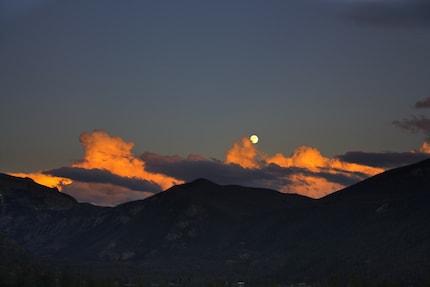
Pack the moment of moonrise (on the day of the lunar eclipse this is at 20:58) so that you can image the moon together with the horizon. If it's still a little bright, all the better!
Tips for taking pictures: What I have already written above applies even more here: you have to expose manually. The greater the proportion of black night sky, the greater the risk that the automatic exposure will overexpose the moon itself and no structure will be visible. In contrast to the underexposed areas, you can no longer remove this in post-processing. If you include a piece of landscape in the photo, it should still be a little bright because then the differences in brightness are smaller. The lunar eclipse will soften these, but the moon will probably still be much brighter than the rest. In any case, photograph in RAW. Even with a normal telephoto focal length, you should not expose for several seconds because of the movement. However, a tripod can be useful here under certain circumstances.
Time-lapse video or collage
Another idea for which you don't need a telephoto lens at all. Photograph the moon as it moves across the sky. You can combine the individual shots to create a time-lapse video or a single image with many moons. Of course, you will need a tripod for this, as the image section must always be the same.
Tips for taking pictures: Many cameras have a built-in time-lapse function. It takes a photo at predefined intervals and automatically compiles it into a film. Some cameras only have a programmable timer. You then have to compile the photos into a video on the computer yourself.
If you want the camera to move with the moon, there are special rotation tripods for this purpose. [[productlist:5908572]]
Some cameras also have an automatic function for multiple exposures. Here is a multiple exposure of the lunar eclipse from October 2004.
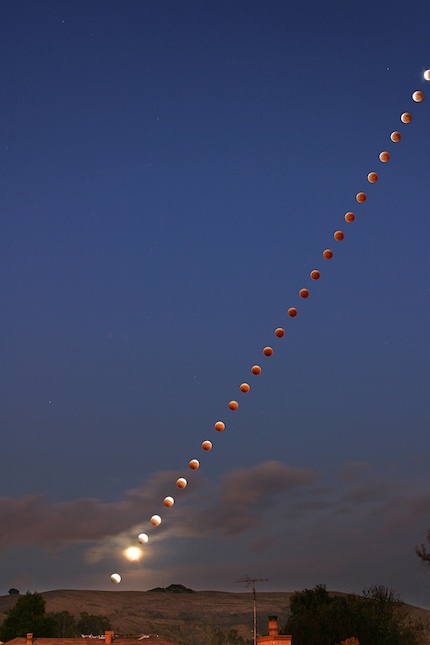
Cover image: Flickr.com/Maurits Verbiest. Shooting data: 5 sec, 800 ISO, f/4, 80 mm (APS-C).
My interest in IT and writing landed me in tech journalism early on (2000). I want to know how we can use technology without being used. Outside of the office, I’m a keen musician who makes up for lacking talent with excessive enthusiasm.
Practical solutions for everyday problems with technology, household hacks and much more.
Show all